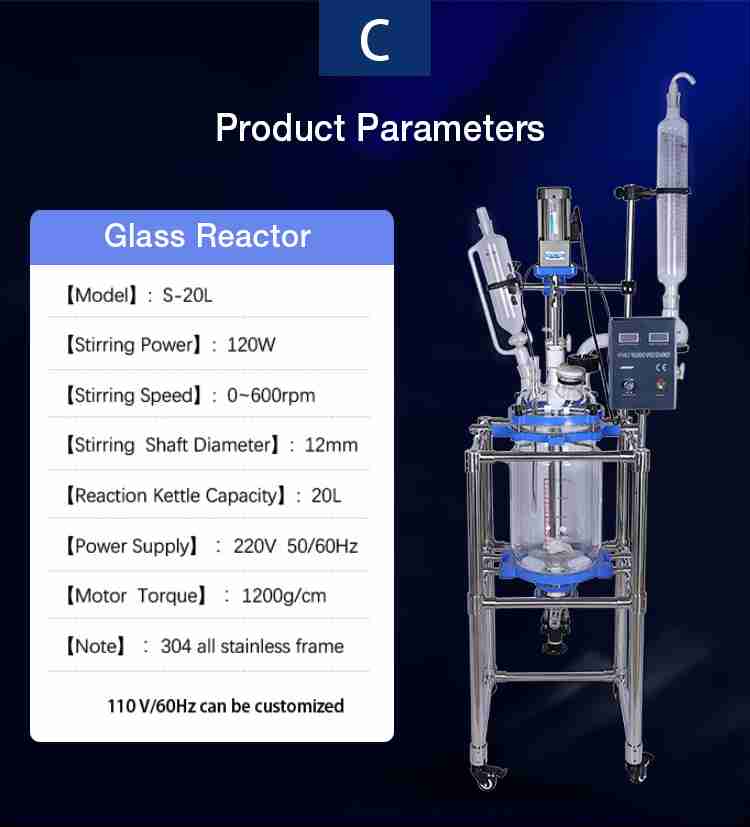What is a jacketed glass reactor
The reaction material is placed in the inner layer of the double-layer glass reactor, and the reaction is carried out under normal pressure or negative pressure in a sealed state. The interlayer can be connected to the medium (refrigerated liquid, heating water or heating oil) for circulating heating or cooling. The double-layer glass reactor (the motor uses a full explosion-proof motor, and the electrical appliance uses an explosion-proof electrical box) to meet the explosion-proof requirements of modern biological, chemical, pharmaceutical and other experimental production workshops.

What is a jacketed glass reactor?
1. Working conditions: The reaction is carried out under normal temperature conditions, and the reaction heat can be quickly separated by connecting tap water.
2. Structure: Since there is a baffle inside, the sample will be stirred more fully.
3. Cleaning: The lower discharge port of the jacketed glass reactor is a PTFE valve, there is no dead corner in the container, it is more convenient to clean and disassemble, and it is more convenient for the discharge of solid materials; the five-mouth reactor with extra large mouth Cover so that it is easy to clean.
4. The heating reaction of the jacketed glass reactor is to circulate hot oil through the glass interlayer interface, and the low temperature reaction is to use refrigerant.
5. Motor: The jacketed glass reactor uses a frequency conversion and AC induction motor. This motor has a constant speed, no brushes and sparks, stable ratio, and very safe, and it will not work. Intermittent.
6. Standard port socket of jacketed glass reactor: assembling reflux and distillation synthesis device.
Features of jacketed glass reactor:
1. Frequency conversion speed regulation, AC induction motor. Constant speed, no brushes, no sparks, safe and stable, and can work continuously.
2. The whole set of glass instruments are made of GG17 high borosilicate glass, which has good chemical and physical properties.
3. The glass interlayer interface is circulated with hot oil, which can be used for heating reaction, and refrigerating liquid can be used for low-temperature reaction.
4. It can be reacted at room temperature, and the heat can be quickly taken away by running tap water.
5. The lower discharge port has a flange port and a PTFE valve. There is no dead corner in the container, and it can be disassembled to facilitate the discharge of solid materials.
6. The four-port reactor cover, the extra-large port design is easy to clean, and the standard port socket can be optionally assembled with reflux and distillation synthesis devices.


